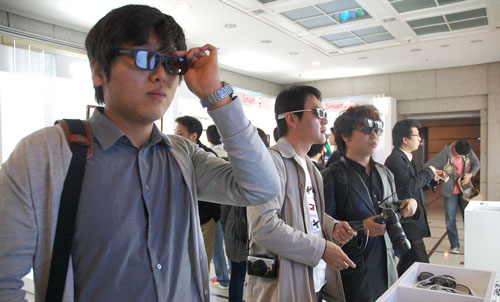
LG Electronics SA on Wednesday unveiled its second generation of 3D televisions, hoping the technology will gain more traction by doing away with the need for expensive glasses.
The new line-up, the LED Cinema 3D range (priced from R10 999 to R34 999) replaces LG’s Infinia range, which accounted for fewer than 10% of TV sales by the Korean company. It hopes that ratio will improve with the new line-up.
LG has clearly taken customer complaints regarding 3D TV to heart — gone are the battery-powered, weighty, costly and proprietary glasses in favour of lightweight ones of the sort used by 3D cinema theatres (although they’re not quite as flimsy).
The glasses are expected to retail for under R100 a pair. LG says consumers can use the 3D glasses from a cinema with a barely noticeable reduction in quality.
As the glasses are battery and shutter-free, “crosstalk” (the noticeable blur during fast-moving sequences) is virtually eliminated, and where older 3D TVs required viewers to keep their heads parallel to the ground and offered limited viewing angles, the Cinema 3D range removes all limits on head position and boasts an enormous viewing angle.
The range is also devoid of screen flicker and, with the added benefit of the glasses no longer requiring built-in shutters, screen brightness is noticeably improved (LG claims the brightness gain is almost 200%).
The Cinema 3D range not only supports existing 3D content, but converts any digital signal to 3D. The quality of the end result depends on the quality of the input, so don’t expect stunning results from low-resolution movie files.
All except the entry-level model also include LG’s “Smart TV” interface, which combines Internet functionality and support for all major social networks with a proprietary application store built by the company.
The Cinema 3D remote is minimalist and works in much the same way as a Wii remote, with the majority of the TV’s functions controlled by pointing at navigational menus and clicking a central button.
LG’s competitors will no doubt have similar offerings to market shortly, and if they’re similarly priced, 3D TV sales could account for a far larger percentage of overall sales than they have to date. — Craig Wilson, TechCentral
- Subscribe to our free daily newsletter
- Follow us on Twitter or on Facebook




